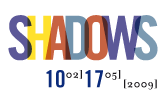
Baroque
While knowledge of the representation of shadows increased—and was even taught at academies—from the Renaissance period onwards, their use continued to be limited, as they were thought to soil or smudge the composition and so impair its visual clarity. Notwithstanding, the Baroque ‘tenebrists’ succeeded like no others in exploiting its spectacular potential. In the religious scenes of Jean Leclerc, Matthias Stom, Gerrit van Honthorst, Hendrick ter Brugghen, Georges de La Tour, Mattia Preti and the so-called Master of Candlelight, the shadow served to emphasise the holy presence and its pervasion of everyday life. Rembrandt and Pieter de Hooch used light and shadow to construct their compositions spatially and suggest the transience of the scene. Finally, the work by Jacob van Oost the Elder is an exceptional example of a shadow cast onto a canvas within a picture.
While knowledge of the representation of shadows increased—and was even taught at academies—from the Renaissance period onwards, their use continued to be limited, as they were thought to soil or smudge the composition and so impair its visual clarity. Notwithstanding, the Baroque ‘tenebrists’ succeeded like no others in exploiting its spectacular potential. In the religious scenes of Jean Leclerc, Matthias Stom, Gerrit van Honthorst, Hendrick ter Brugghen, Georges de La Tour, Mattia Preti and the so-called Master of Candlelight, the shadow served to emphasise the holy presence and its pervasion of everyday life. Rembrandt and Pieter de Hooch used light and shadow to construct their compositions spatially and suggest the transience of the scene. Finally, the work by Jacob van Oost the Elder is an exceptional example of a shadow cast onto a canvas within a picture.

Jean Leclerc (c. 1587-1633)
The Denial of Saint Peter
Oil on canvas, 117 x 151 cm
Corsini Coll. © 1993. Photo Scala, Florence

Rembrandt Harmensz. van Rijn, follower of (1606-1669)
A Man seated reading at a Table in a Lofty Room, c. 1628-1630
Oil on oak panel, 55.1 x 46.5 cm
The National Gallery, London. Bought, 1917

Matthias Stom (c. 1600-after 1652)
The Incredulity of Saint Thomas, c. 1641-1649
Oil on canvas, 125 x 99 cm
Museo Nacional del Prado, Madrid

Georges de La Tour, studio of (1593-1652)
The Education of the Virgin, c. 1650
Oil on canvas, 83.8 x 100.3 cm
The Frick Collection, New York. Purchased 1948
















